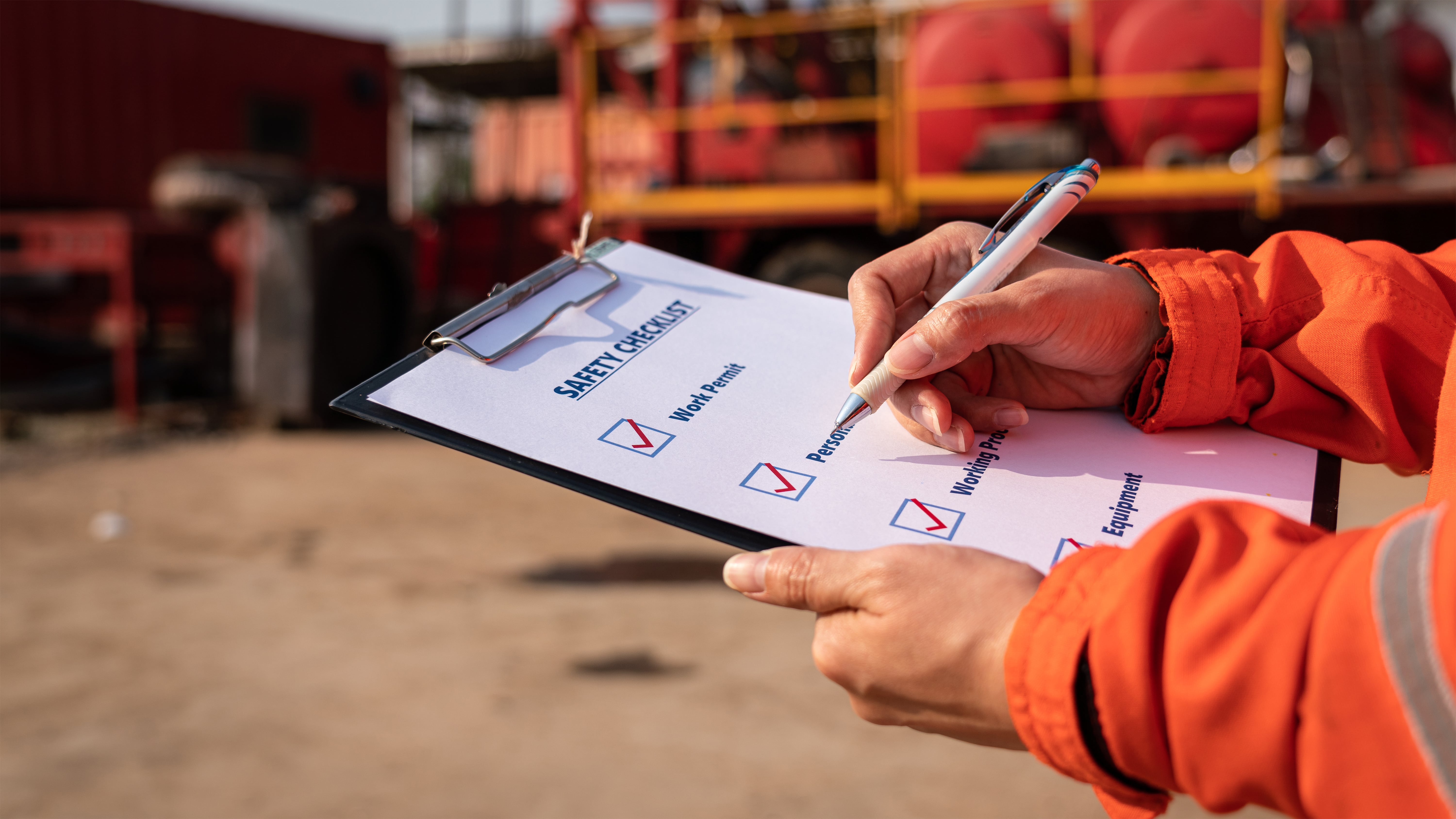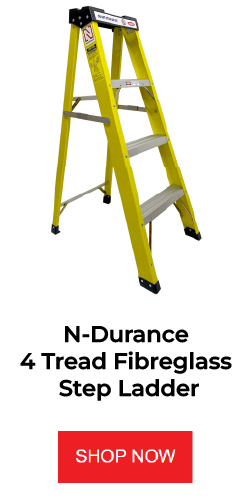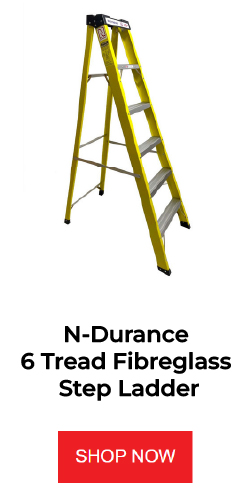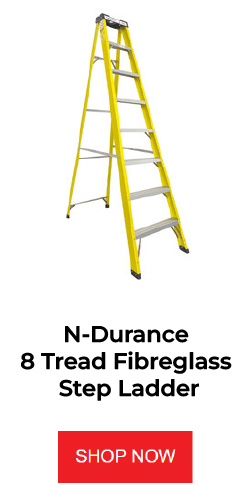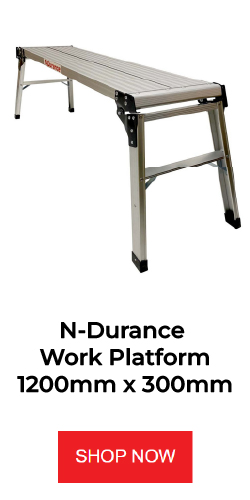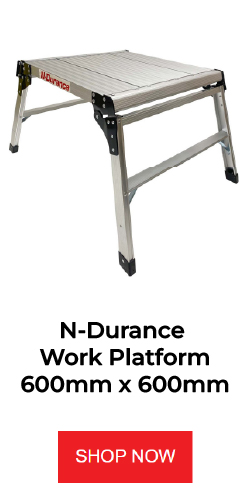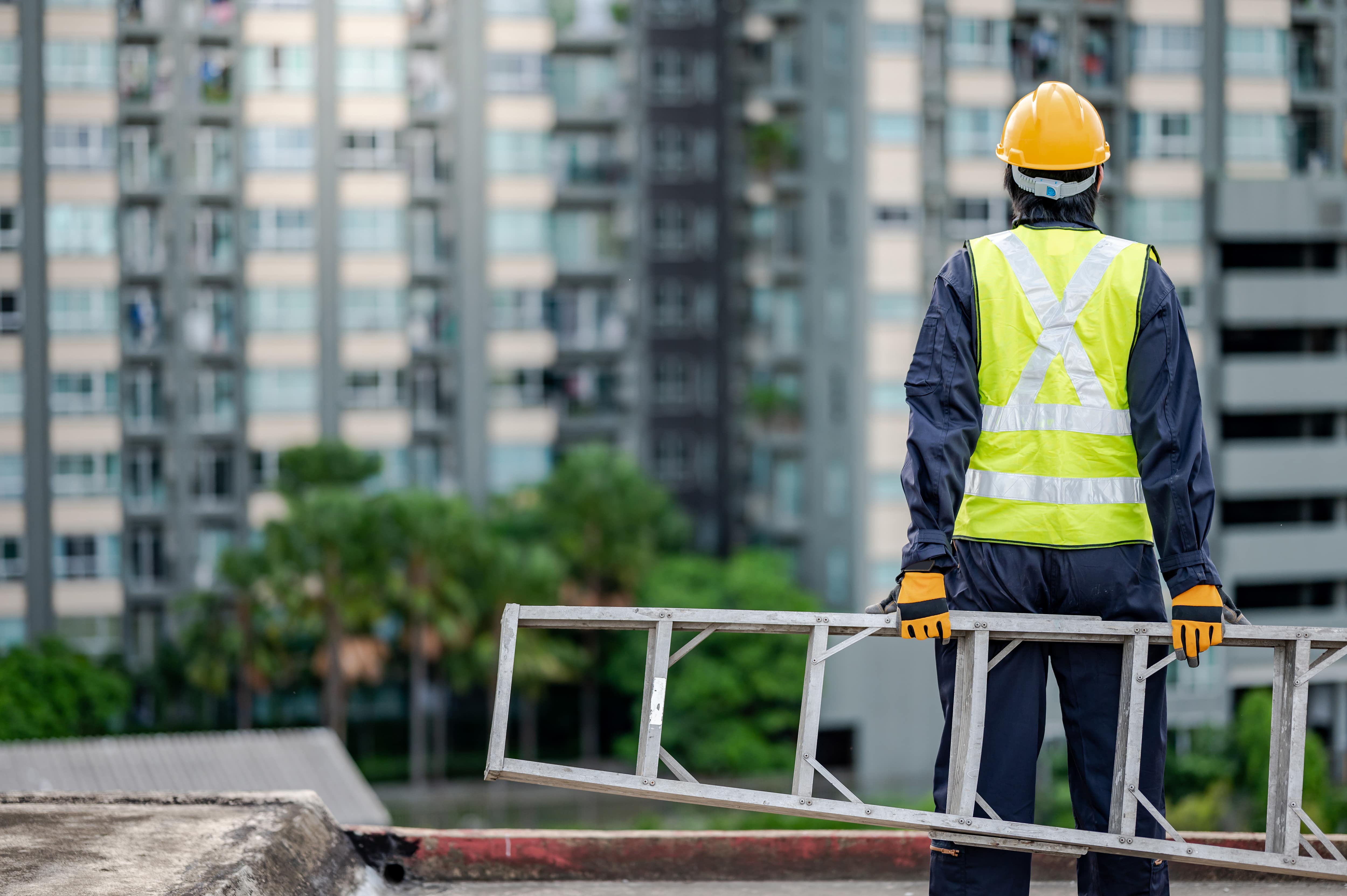
In the dynamic and challenging world of construction, ladders serve as more than just a simple tool. They bridge the gap between the ground and elevated workspaces, enabling workers to perform tasks that would otherwise be impossible due to height constraints. They also provide a safe and secure platform to work from, when used properly.
However, the use of ladders comes with an inherent responsibility to ensure that they are used responsibly and cautiously on the job site. This is not just a matter of meeting industry standards, but a duty to keep yourself and your coworkers safe!
In this blog post we'll be be covering the importance of ladder safety, how to choose the right ladder, how to stay safe whilst using a ladder, and our top picks.
The Role of Ladders in Construction
Ladders play a vital role in construction and contracting work. They are the veins of a construction site, providing crucial access to elevated working spaces that would be otherwise inaccessible. Ladders make it possible to move tools and materials vertically and allow workers to carry out tasks such as painting, roofing, and electrical installations. Despite their apparent simplicity, ladders are essential tools in the construction industry, proving that even the most straightforward tools can have a significant impact on productivity and efficiency.
Importance of Ladder Safety
While ladders can be incredibly useful, they can also pose significant safety risks if not used correctly. Falls from ladders account for a significant number of workplace injuries and fatalities each year – and the figures truly highlight the importance of prioritizing ladder safety.
It’s not just about compliance with regulations; it’s about preventing accidents and protecting lives. Every time a worker climbs a ladder, they are placing their trust in its reliability. This trust must be upheld through rigorous safety practices.
How to Choose a Reliable Ladder
When choosing your work ladder, there are a few straightforward factors to consider from a safety perspective. Ultimately you want the most reliable ladder possible, since you are trusting it with your whole weight – the last thing you want is for a flimsy ladder to cause you an injury!
A good ladder will be:
- Sturdy enough to easily take your whole weight, as well as any tools and accessories you might be holding
- Durable enough to withstand the rigours and harsh conditions of the job site
- Secure enough to stay in place and guarantee you don’t slip, no matter what
Whilst there are no precise measurements for these factors, there are a few key features you can look for that will ensure that a ladder is high-quality and designed for professional use.
Material
Modern ladders are typically made from one of three materials: wood, aluminium, or fibreglass.
Wooden ladders are the cheapest of the lot and offer impressive sturdiness. They are best suited for indoor use however, as the wood can rot, splinter, or warp when left outside in the elements. Construction sites will usually avoid using these.
Aluminium ladders are probably the most popular types of ladders thanks to their durability, affordability, and lightweight feel. While they are ideal for DIY work and some light contracting work, they are able to conduct electricity, which isn’t safe for use with power tolls and other electrical items.
Fibreglass ladders are ideal for professional use as they are more lightweight and durable than even aluminium. These ladders last an incredibly long time and can safely be used near electrical items, and in harsh conditions.
Locking Mechanisms
Any proper step ladder will have an in-built locking mechanism to keep the ladder in place when it is extended. Usually in the form of brace and bars, these prevent the ladder from collapsing in on itself or retracting when pressure is put on it. Failure to use this can easily result in injury, so you should make sure the locking mechanism is secure, and solid.
Slip-resistant feet
Having non-slip feet on the ladder legs will help to guarantee that your ladder never slips in wet conditions. Whilst you can hook your ladder to an anchor point to prevent the top from slipping, the use of slip-resistant feet will make sure your ladder doesn’t fall from under you.
Secure rungs
Since you’ll be trusting your whole weight on the steps or rungs of the ladder, you should ensure that they are solid and secure, to stop you from sliding around or slipping. Many ladders offer slip resistant features on ladder rungs like grooves and treads, to help keep you stable on the platform.
Weight capacity
One of the most important factors to always check is the weight capacity of the ladder. It should not only be suitable for your weight as well as any tools you might be carrying, it should be able to withstand much more than that to ensure that you’ll stay safe.
Ladder Safety Tips: Guidelines for Safe Usage
Here are some essential safety tips to bear in mind when using your ladder:
- Inspect Before Use: Always inspect the ladder before use. Look for any signs of damage or wear that could compromise safety, such as loose screws, cracks in the rungs or side rails, and worn out non-slip feet.
- Use the Right Ladder for the Job: Not all ladders are created equal. Make sure you’re using the right type and size of ladder for your specific task. Using an inappropriate ladder can lead to instability and increase the risk of falls.
- Maintain Three Points of Contact: Keep two hands and one foot, or two feet and one hand on the ladder at all times to maintain balance. This reduces the likelihood of slipping or losing balance.
- Don’t Overreach: Overreaching can cause you to lose your balance and fall. Instead, climb down and move the ladder as needed. Remember: It’s safer to move the ladder than to risk a fall.
- Follow Manufacturer Instructions: Always follow the manufacturer’s instructions for setting up and using the ladder. These guidelines are designed to ensure your safety.
Our Top Picks
Ladders
The N-Durance range of fibreglass step ladders are designed to provide the maximum stability, reliability, and durability for the toughest of jobs. With a max load capacity of 150, the fibreglass construction ensures that you and your tools will be secured, with slip-resistant treads to help keep you stable. Lightweight and compact, they are easy to transport around the jobsite, with handy tool slots allowing you to store your screwdrivers, drills, or any other tools you might need!
Platforms
Work platforms provide a more convenient alternative to full-length ladders, for jobs that only require a small vertical height off the ground. Featuring a compact foldable design, these platforms are ultra-compact, so you can quickly and easily move them from job to job. The locking hinges ensure absolute stability, with a splayed base layout that helps secure you in place. These are perfect for any DIYer or professional contractor.
Conclusion
In construction work, ladders are an essential tool that can also pose significant risks if not used safely and correctly. By choosing reliable ladders and adhering to safety guidelines, you can mitigate these risks and ensure that every job is completed safely and efficiently.


